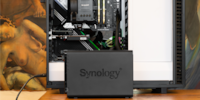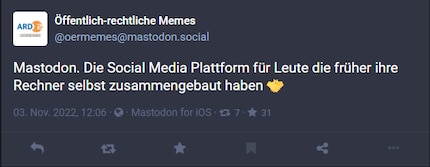
Background information
A horizon beyond the white X: what is Bluesky?
by Jan Johannsen

Elon Musk’s takeover of Twitter turbocharged Mastodon’s profile. The microblogging service does things very differently than the richest man in the world’s 44-billion-dollar purchase.
Mastodon is everywhere at the moment. The microblogging service is currently being discussed as a possible alternative to Twitter. Anyone who no longer feels comfortable with Elon Musk could find a new home there. There are still fewer accounts tweeting, well, tooting there, and some things work differently with the mammoth than with the bird.
No one company or even one person controls everything. In addition, Mastodon doesn’t aim of make a profit and – also thanks to the decentralized servers – gets by with comparatively little money. There are no ads on the platform and no monthly fee. The software is free and open source. Eugen Rochko came up with the whole thing while studying computer science in Jena. He is now working on the software with a non-profit limited company in Berlin.
Each organisation or individual decides the rules or moderation strategies for their servers. According to Mastodon’s developers, they have no control over instances. On their overview page, however, they only promote servers «that are consistently committed to moderation against racism, sexism, and transphobia.»
As well as general instances, many are also organised thematically or regionally. There are two timelines in Mastodon: local and federated. On one, you only see toots from your instance; on the other, you can see posts from all the accounts you follow. For example, you could look for a server that’s intended for fans of your favourite series or club. The local timeline shows a lot on your chosen topic, while the other timeline shows everything else.
You can join some instances directly; others have waiting lists – partly in order not to grow too quickly and to have enough server resources. Then there are closed communities for which you need an invitation. If you want to try Mastodon, you don’t have to wait until you find the perfect instance for you. You can move an account – including followers and posts – to another server at any time.
Similar things have different names on Mastodon compared to Twitter. A post is called a toot instead of tweet. A retweet is a boost in the Fediverse. However, you can’t add a comment to them. If you want to say something about it, you’ll have to reply. In addition, you have 500 characters for a post. On Twitter, it’s only 280 – in 2016, when Mastodon was created, it was only 140.
Mastodon doesn’t have a full-text search like Twitter does. If you want your toots to be found, you have to use hashtags. They’re searchable. There’s also no sophisticated search function for accounts. If you want to follow someone, you need to know their full account name. So @username@instance.url – many people who are at least looking at Mastodon write theirs in their Twitter bio.
If you want to say goodbye to Twitter, give Mastodon a try. Galaxusand Digitec are already on the microblogging service.
When I was but a young student, I'd sit in my friend's living room with all my classmates and play on his SuperNES. Since then I've had the opportunity to test out all the newest technology for you. I've done reviews at Curved, Computer Bild and Netzwelt, and have now arrived at Galaxus.de.
Interesting facts about products, behind-the-scenes looks at manufacturers and deep-dives on interesting people.
Show all
Background information
by Jan Johannsen

Background information
by David Lee

Background information
by Richie Müller
When Mastodon(https://joinmastodon.org/) hit the internet in 2016, Twitter was already ten years old. Instead of a central server, the new platform is designed to be decentralised. The underlying concept of federation can be compared to e-mails. There is no central server. Theoretically, each person can set up their own mail server. Nevertheless, all users can communicate with each other. This works thanks to the ActivityPub protocol in the background. In theory, other networks could also support it, allowing communication to and from Mastodon.
Mastodon consists of numerous servers called instances. As of early November 2022, instances.social had over 3,821 different servers. About six million accounts are currently distributed among them, with almost 1,700 servers not hosting a single account. Together, the instances form the so-called Fediverse: the Universe of Mastodon. It’s like a lot of little Twitters connected to each other.

You can also publish posts that are only visible in your instance. That way, if you’re a Star Wars fan, you don’t have to listen to Trekkies drone on about how bad Andor is after you praise the latest episode. This is just one example of how the various instances and their moderation rules create safe spaces where trolls don’t stand a chance.